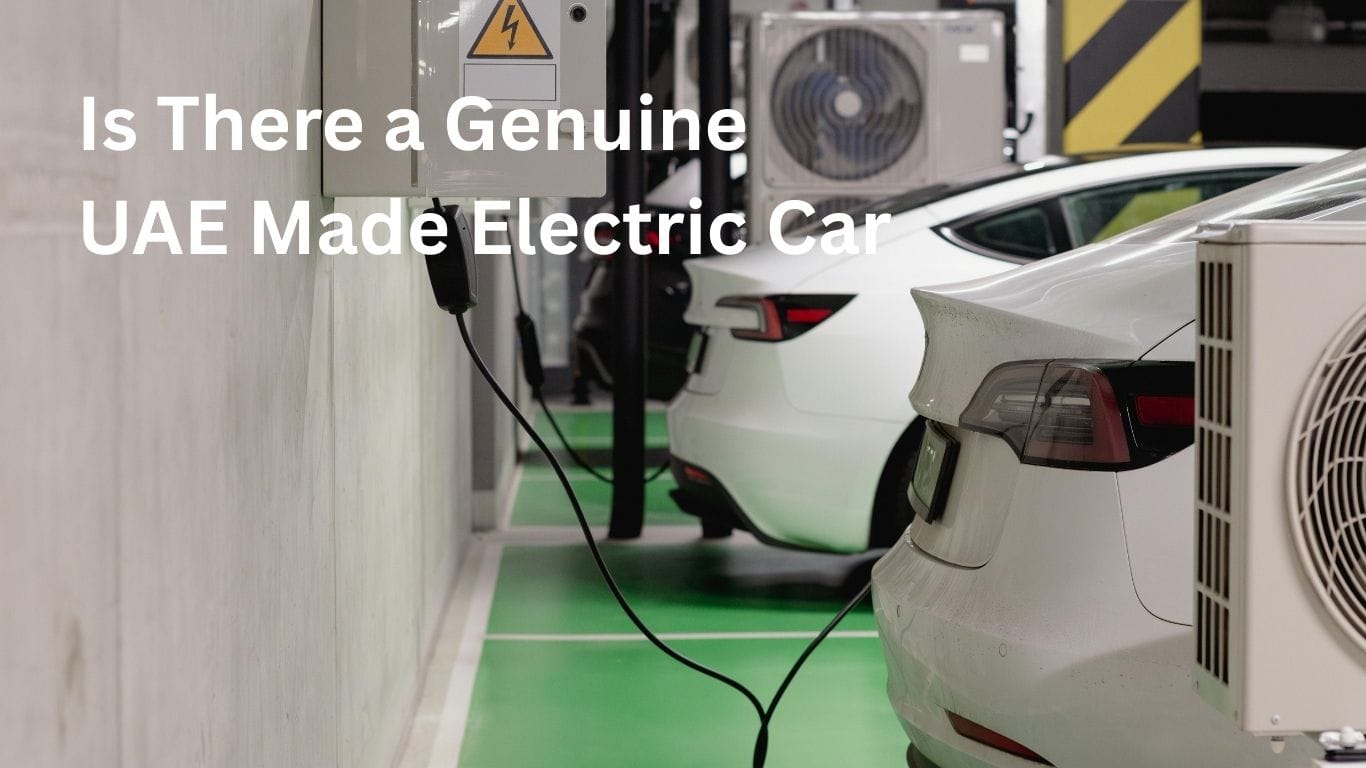Is There a Genuine “UAE Made Electric Car” Yet? and Why?
The United Arab Emirates (UAE) has long been synonymous with oil wealth, desert landscapes, and futuristic skylines—but in recent years, it’s undergone a quiet revolution toward sustainability. With ambitious national strategies like UAE Net Zero by 2050 and Dubai’s Green Mobility Initiative, electric vehicles (EVs) are no longer a novelty but a national priority. Yet a burning question remains: Is there a top electric car actually made in the UAE?
Unlike legacy automotive nations such as Germany, Japan, or the U.S., the UAE hasn’t historically been a car manufacturer. However, that’s changing. Through strategic partnerships, localized assembly plants, and tech-driven startups, the UAE is inching closer to producing homegrown electric mobility solutions. While brands like Lucid, Tesla, and BYD dominate UAE roads—and even have showrooms or service centers in Dubai and Abu Dhabi—none are manufactured domestically at scale.
That said, the Lucid Air, assembled in limited capacity at a facility in Saudi Arabia (with strong UAE investment ties via the Public Investment Fund), is often misattributed as a “UAE-made” vehicle due to regional synergy. More accurately, the UAE is emerging as a high-tech EV ecosystem hub, not yet a volume manufacturer—but with serious potential.
In this article, we’ll explore whether a true “UAE-made” electric car exists, spotlight the closest contenders, analyze why local production matters, and examine how Emirati policies, infrastructure, and consumer demand are shaping the future of homegrown EVs. We’ll also compare the UAE’s progress against global benchmarks like the Fisker Ocean (learn more ) and Hyundai Ioniq 5 (details here ), while evaluating sustainability claims and real-world viability.
The Current State of EV Manufacturing in the UAE
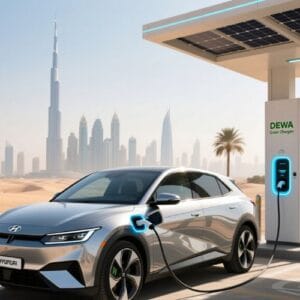
As of 2025, the UAE does not produce a fully indigenous, mass-market electric car from design to assembly under a homegrown Emirati brand. However, this doesn’t mean the nation is idle in the EV race. On the contrary, the UAE is strategically positioning itself as a regional EV innovation and logistics center, leveraging its geographic advantage, sovereign wealth, and tech-forward governance.
Key developments include:
- Lucid Motors’ Middle East presence: Though headquartered in California, Lucid has strong UAE financial backing through Mubadala Investment Company. While final assembly occurs in the U.S. and Saudi Arabia, Lucid’s regional HQ is in Dubai, and it plans localized service and customization hubs.
- Chery and MG assembly partnerships: Chinese automakers like Chery and MG (SAIC Motor) have begun semi-knocked-down (SKD) assembly operations in the UAE, reducing import tariffs and speeding up delivery. The MG ZS EV (see specs ) is already popular in Dubai and may soon see partial local assembly.
- UAE-based EV startups: Companies like NWTN (Neuron World Tech New Energy)—a Dubai-incorporated EV tech firm—are developing smart electric platforms with AI integration, though production is outsourced to China.
- Free zone incentives: Jebel Ali Free Zone (JAFZA) and Khalifa Industrial Zone Abu Dhabi (KIZAD) offer 100% foreign ownership, zero tax, and logistics support to attract EV manufacturers.
Crucially, the UAE prioritizes EV adoption over domestic manufacturing—for now. Over 50,000 EVs were registered in the UAE by end-2024, supported by more than 700 public charging stations (learn about EV charging infrastructure ). This creates a fertile testing ground for future UAE-branded EVs.
Still, without a vertically integrated supply chain—especially for EV batteries (read more )—true “Made in UAE” status remains aspirational. Yet the foundation is being laid.
Is There a Genuine “Made in UAE” Electric Car Yet?
The short answer: Not yet—but the pipeline is active.
When consumers search for a “UAE-made electric car,” they often encounter marketing from global brands with regional showrooms. For example, the Tesla Model X (details ) and Volvo C40 Recharge (review ) are widely available in Dubai, but both are imported. Similarly, the BYD Seal (explore ) is sold through Al-Futtaim, yet manufactured in China.
So, what qualifies as “Made in UAE”? According to international trade standards, at least 51% of a vehicle’s value must originate domestically—including design, engineering, battery integration, and final assembly. By this metric, no Emirati EV currently meets the bar.
However, a notable contender is NXT Motors, a Dubai-based startup that unveiled its NXT One electric SUV concept in 2023. Designed in the UAE with input from local engineers, the NXT One features solar roof panels (similar to the Fisker Ocean’s solar system [link ]) and AI-driven driver assistance. Yet, prototype production was outsourced to Turkey due to lack of local EV manufacturing facilities.
Another angle: joint ventures. In 2024, Abu Dhabi’s ADQ signed an agreement with a European EV platform developer to establish a “smart mobility campus” focused on modular EV assembly. While not a brand per se, this could enable white-label UAE-assembled EVs by 2026.
Until then, the UAE’s role remains that of a demand creator, not a volume producer. But with national strategies emphasizing local value creation, the first true “Made in UAE” electric car may debut within this decade—potentially as a luxury SUV targeting regional tastes for spacious, tech-rich, climate-resilient vehicles.
Why Local EV Manufacturing Matters for the UAE
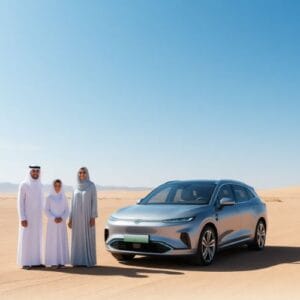
You might wonder: Why should the UAE bother making its own electric cars when it can import the best from Tesla, Hyundai, or BMW? The reasons are economic, strategic, and symbolic.
Economic Diversification
The UAE’s economy has historically relied on hydrocarbons. Producing EVs aligns with Vision 2031 and Operation 300bn, aiming to boost the industrial sector’s contribution to GDP from 13% to 25%. Local EV manufacturing would create high-skilled jobs, attract foreign R&D investment, and reduce trade deficits from vehicle imports (over AED 15 billion annually).
Energy Transition Credibility
Hosting COP28 in 2023 put the UAE under global scrutiny. Launching a homegrown EV would demonstrate genuine commitment to decarbonization—not just buying green tech, but building it. This enhances soft power and attracts ESG-focused capital.
Customization for Regional Conditions
Imported EVs aren’t optimized for Gulf climates. Extreme heat degrades batteries faster, and sandstorms challenge air filters and sensors. A UAE-made EV could feature:
- Thermally stable battery chemistries (like LFP, used in the Fisker Ocean Sport [link ])
- Enhanced cabin cooling pre-conditioning
- Sand-resistant seals and underbody protection
- UV-resistant interior materials (e.g., vegan leather like in the Hyundai Ioniq 5 [link ])
Geopolitical Leverage
As global supply chains fragment, local production ensures energy and transport security. It also positions the UAE as a gateway to African and South Asian EV markets, leveraging its logistics supremacy.
In essence, a UAE-made EV isn’t just a car—it’s a sovereign technology statement.
Closest Contenders: EVs with UAE Ties
While no mass-produced electric car is fully “Made in UAE,” several models have deep Emirati connections through investment, assembly, or market focus. Here are the top five contenders often mistaken—or hoped—to be UAE-native:
- Lucid Air
Backed by Mubadala (Abu Dhabi’s sovereign wealth fund), Lucid represents the closest link. Though assembled in the U.S., its Middle East HQ is in Dubai, and it offers right-hand-drive conversions and desert-tuned thermal management. The Air’s 517-mile EPA range makes it ideal for GCC highways. - NXT One (Prototype)
Dubai-designed, this SUV concept features a 360-degree camera system, solar roof, and modular interior—tailored for Emirati families. Still in pre-production, it symbolizes local ambition. - MG ZS EV (Potential SKD Assembly)
Already a best-seller in the UAE, MG plans partial assembly at KIZAD. If realized, future ZS EVs could carry “Assembled in UAE” labels—similar to how Nissan builds Patrols locally. - Fisker Ocean (Gulf Distribution Hub)
Though American, Fisker selected Dubai as its MENA distribution center. Its California Mode (open-glass roof) and solar roof (details ) resonate with open-air desert lifestyles. - Chery eQ5 / Omoda E5
Through its UAE partner Al-Futtaim, Chery is exploring local CKD (Completely Knocked Down) assembly. The Omoda E5’s bold design and 450-km range appeal to young Emirati professionals.
None are fully UAE-made, but together they form an emerging ecosystem—a stepping stone toward true domestic production.
Comparison Table: UAE-Linked EVs (2025)
These vehicles reflect the UAE’s import-to-innovate strategy—a pragmatic path toward eventual self-reliance.
The Role of UAE Government Policies in Spurring EV Innovation
The United Arab Emirates isn’t waiting for the private sector to lead the EV revolution—it’s actively engineering the ecosystem through bold, forward-looking policies. From federal decrees to emirate-specific incentives, the UAE government has created one of the most EV-friendly regulatory landscapes in the Middle East.
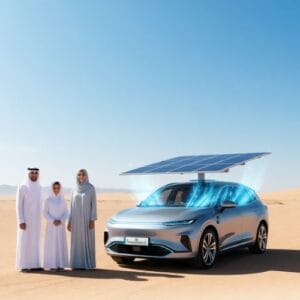
At the national level, UAE Net Zero by 2050 is the cornerstone. Launched in 2021, it’s the first such strategy in the Arab world and mandates a 40% reduction in carbon emissions by 2030. Transportation accounts for nearly 25% of the UAE’s emissions, making EVs a critical lever. To accelerate adoption, the government introduced:
- Zero registration fees for electric vehicles in Dubai and Abu Dhabi
- Free public charging at DEWA (Dubai Electricity and Water Authority) stations until 2025
- Exemption from Salik tolls (Dubai’s road toll system) for EVs
- Dedicated EV lanes on key highways like Sheikh Zayed Road
Dubai’s Green Charger Initiative, launched in 2015 and expanded in 2023, aims to install 1,000 public charging points by 2025—a target it’s on track to exceed. Meanwhile, Abu Dhabi’s EV Green Drive Program offers up to AED 3,000 in home charger subsidies.
But policy isn’t just about adoption—it’s about local value creation. The Operation 300bn industrial strategy explicitly lists “clean mobility” as a priority sector, offering:
- 100% foreign ownership in free zones like KIZAD and JAFZA
- R&D tax credits for EV battery and motor development
- Fast-tracked licensing for EV startups
These measures have already attracted global players. Lucid Motors chose Dubai for its regional HQ; Fisker Inc. established its MENA distribution center in the UAE (learn more about the solar-powered Fisker Ocean ). While these aren’t “UAE-made” cars yet, the policy groundwork is being laid for future local assembly—or even full manufacturing.
Critically, the UAE is also investing in EV battery research through partnerships with institutions like Khalifa University. Given that battery production is the biggest barrier to domestic EV manufacturing, this could be a game-changer. As the nation transitions from oil exporter to clean tech enabler, electric vehicles are at the heart of its new identity.
Infrastructure Readiness: Is the UAE Prepared for Homegrown EVs?
A locally made electric car is only as viable as the infrastructure that supports it. Fortunately, the UAE has been building its EV backbone faster than most developed nations.
As of late 2024, the UAE boasts over 750 public charging stations, with the vast majority in Dubai and Abu Dhabi. DEWA’s Green Charger network alone includes more than 300 fast chargers (up to 150 kW), compatible with all major EVs—including the Hyundai Ioniq 5, which supports ultra-fast 350 kW charging (details ).
But infrastructure isn’t just about plugs—it’s about integration. The UAE is pioneering smart-grid EV integration:
- Vehicle-to-Grid (V2G) pilots in Masdar City allow EVs like the BYD Seal (review ) to feed power back during peak demand.
- AI-powered charging apps (e.g., EWEC Charge) optimize charging times based on grid load and user schedules.
- Solar-powered charging stations are being rolled out in desert areas, aligning with the Fisker Ocean’s solar roof philosophy (see how solar boosts EV range ).
For a future UAE-made EV, this infrastructure means instant market readiness. Unlike in many countries where local EVs struggle with charging deserts, a Dubai-assembled electric SUV could hit the road knowing that fast charging is available every 5–10 km in urban centers.
Moreover, the UAE’s extreme climate has driven innovations in thermal management. Local engineers are testing battery pre-cooling algorithms and heat-resistant electrolytes—critical for any homegrown EV that must endure 50°C summers. These R&D efforts, though currently academic, could soon transfer to domestic production lines.
In short: the UAE isn’t just ready for a locally made electric car—it’s begging for one.
Consumer Demand and Market Trends in the UAE
You can have the best policies and infrastructure, but without demand, local EV production won’t take off. The good news? UAE consumers are increasingly going electric—and they’re demanding local relevance.
According to the 2024 UAE EV Adoption Report, EV registrations grew by 68% year-over-year, with over 60,000 electric vehicles now on UAE roads. SUVs dominate—73% of EV buyers choose crossovers or SUVs, reflecting regional preferences for high ground clearance, spacious interiors, and family-friendly features.
This aligns perfectly with upcoming 7-seater electric models like the Hyundai Ioniq 7 (expected 2024 ) and potential UAE-designed SUVs. Emirati families prioritize:
- Three-row seating (see our guide to 7-seater electric cars )
- Luxury interiors with premium, heat-resistant materials
- Long range (minimum 400 km WLTP) for desert road trips
- Fast AC pre-conditioning to cool cabins before entry
Interestingly, affordability is secondary for many UAE buyers—but not all. While luxury EVs like the Tesla Model X (review ) and Lucid Air thrive, there’s strong interest in affordable options under AED 120,000—such as the MG ZS EV (details ) or Kia EV6 (explore Kia’s EV lineup ).
This dual-market dynamic creates a unique opportunity: a UAE-made EV could target the premium SUV segment (where margins are high) while licensing its platform for budget-friendly variants assembled locally—mirroring how Hyundai offers both the Ioniq 5 and more affordable Kona Electric.
Moreover, UAE consumers care about sustainability beyond tailpipes. Features like vegan interiors (like the Fisker Ocean’s eco-cabin) and recycled materials (learn how EVs help the environment ) are major selling points—especially among younger Emiratis.
In essence, the market is ripe, discerning, and ready for a homegrown electric vehicle that speaks its language.
Challenges to Local EV Production in the UAE
Despite the momentum, significant hurdles remain before we see a true “Made in UAE” electric car roll off a local assembly line.
1. Lack of Domestic Supply Chain
The UAE imports 100% of EV batteries, motors, and power electronics. Without local cell manufacturing—like what CATL or LG Energy Solution offer globally—the nation remains dependent on China, Korea, and Europe. Battery logistics alone add 15–20% to production costs.
2. Skilled Labor Shortage
While the UAE excels in finance and tourism, it lacks a deep bench of automotive engineers, especially in high-voltage systems, battery chemistry, and embedded software. Most EV talent is expatriate, creating retention and knowledge-transfer risks.
3. Scale Economics
To be cost-competitive, an EV plant needs to produce at least 50,000 units/year. The entire UAE EV market is only ~60,000 vehicles—meaning a local brand would need to export aggressively from day one, competing against established players like Volvo XC40 Recharge (review ) or Hyundai Kona Electric (2022 specs ).
4. Certification and Safety Standards
The GCC has its own vehicle homologation rules, but they’re still evolving for EVs—especially around battery crash safety, thermal runaway protocols, and cybersecurity. Navigating this adds time and cost.
5. Cultural Perception
Despite progress, some consumers still associate “UAE-made” with luxury real estate or finance—not hardware. Building trust in a homegrown car brand will require exceptional quality and strong storytelling
That said, these challenges aren’t insurmountable. With strategic partnerships (e.g., licensing platforms from Fisker or BYD), phased assembly (starting with SKD), and targeted R&D, the UAE could launch a credible EV within 3–5 years.
Future Outlook: Will the UAE Launch Its Own EV Brand by 2030?
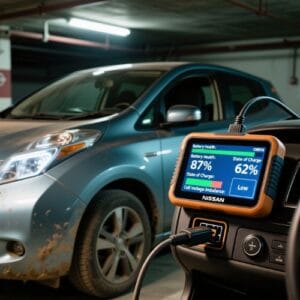
All signs point to yes—but not alone.
The UAE’s most likely path to a domestic electric car isn’t through a solo startup like Rivian, but via strategic alliances. Consider this plausible scenario by 2028:
- Abu Dhabi’s ADQ or Mubadala acquires a minority stake in a global EV platform developer (e.g., Canoo or Fisker).
- A UAE-branded SUV is co-developed, featuring:
- Gulf-optimized thermal systems
- Solar roof (inspired by Fisker Ocean’s 1,500-mile annual solar range [link ])
- AI concierge integrated with local services (e.g., booking desert safaris or mosque prayer times)
- Final assembly occurs in KIZAD, using imported battery packs but locally sourced interior trim (e.g., recycled date-palm fiber composites).
- The vehicle qualifies as “Made in UAE” under GCC rules (≥40% local value addition).
Such a model would leverage the UAE’s strengths: capital, connectivity, and customization—not raw manufacturing.
Moreover, UAE universities are already preparing. Khalifa University’s Center for Autonomy and AI is training engineers in EV control systems. The Mohammed Bin Rashid Space Centre is even exploring lightweight composites for terrestrial use.
By 2030, the UAE may not produce a Tesla rival—but it could launch a regional electric icon: a luxurious, solar-enhanced, sand-ready SUV that’s as Emirati as the Burj Khalifa.
And when it does, it won’t just be a car. It’ll be a symbol of post-oil sovereignty.
How Global EV Brands Are Paving the Way for UAE Manufacturing
While the UAE doesn’t yet produce its own electric car, global automakers are actively localizing operations—creating a blueprint for future domestic production. These partnerships aren’t just about sales; they’re strategic footholds in a region transitioning from oil dependence to tech-enabled mobility leadership.
Lucid Motors stands out as the most integrated global player with UAE ties. Backed by Mubadala Investment Company, Lucid opened its Middle East headquarters in Dubai in 2022 and launched the Lucid Air across the GCC in 2023. Though assembled in the U.S., Lucid’s presence includes:
- Custom tuning for desert heat resilience
- Right-hand-drive conversions for regional markets
- UAE-based service and software update hubs
Similarly, Fisker Inc. selected Dubai as its MENA distribution center for the Fisker Ocean—an SUV uniquely suited to Emirati lifestyles. With its solar roof generating up to 1,500–2,000 miles of annual range (learn more ), California Mode (retractable glass panels), and vegan sustainable interior, the Ocean resonates with eco-conscious UAE buyers who value both luxury and environmental responsibility.
Meanwhile, Hyundai is accelerating its EV footprint through the Ioniq sub-brand. The Ioniq 5 (details )—with its 800V ultra-fast charging (10–80% in 18 minutes)—is already a favorite among Dubai professionals. Hyundai’s long-term plan includes localized assembly of its Ioniq 6 sedan and upcoming Ioniq 7 three-row SUV, the latter perfectly aligned with regional demand for 7-seater electric vehicles (see our guide ).
Even legacy automakers are adapting:
- BMW now offers the iX and i4 through Al-Futtaim, with plans for EV-specific service centers in Abu Dhabi.
- Kia’s EV6 and future EV9 (a 3-row electric SUV) are being positioned for UAE families (explore Kia’s SUV lineup ).
These brands aren’t just selling cars—they’re transferring knowledge, building supply chain relationships, and normalizing EV ownership. In doing so, they’re laying the industrial groundwork for a future where “Made in UAE” isn’t a dream, but a reality.
The Environmental and Economic Case for a UAE-Made EV
Why does the UAE need its own electric car? The answer lies at the intersection of climate accountability, economic strategy, and national identity.
Environmental Imperative
The UAE hosted COP28 in 2023, signaling its intent to lead—not just participate—in the global energy transition. Yet, transportation remains a major emissions source. By producing a locally optimized EV, the UAE can:
- Reduce reliance on carbon-intensive vehicle imports
- Promote circular economy practices (e.g., using recycled date-palm fibers in interiors, like Fisker’s eco-materials [link ])
- Integrate solar augmentation (mirroring the Fisker Ocean’s roof system) to offset grid dependency in a sun-drenched nation
Economic Diversification
Oil still accounts for nearly 30% of UAE federal revenue. Operation 300bn explicitly targets advanced manufacturing as a GDP growth engine. A domestic EV program could:
- Create 5,000+ high-tech jobs in engineering, software, and battery tech
- Attract $2–5 billion in foreign direct investment through joint ventures
- Generate export revenue by targeting Africa, South Asia, and GCC neighbors
Energy Synergy
The UAE is investing heavily in renewables—Masdar City, Mohammed bin Rashid Solar Park, and ADNOC’s green hydrogen projects. A UAE-made EV would close the loop between clean energy production and consumption. Imagine an Emirati SUV charged by 100% solar power, using locally sourced batteries, and featuring AI-driven efficiency—a true sovereign clean mobility ecosystem.
Moreover, as explored in our article on how EVs save the environment , the lifecycle emissions of EVs drop dramatically when paired with clean grids. The UAE’s rapidly decarbonizing grid makes this synergy increasingly viable.
In short: a UAE-made EV isn’t just a car—it’s a strategic asset for climate resilience, economic sovereignty, and global influence.
Lessons from Global EV Startups: What the UAE Can Learn
The UAE doesn’t need to reinvent the wheel—it can learn from global EV pioneers who succeeded (and failed) under similar constraints.
Fisker Inc. offers a masterclass in capital-efficient innovation. Rather than building factories, Fisker partnered with Magna Steyr for contract manufacturing—freeing capital for R&D. The result? The Fisker Ocean, packed with unique features like digital radar (cheaper than LiDAR) and solar roof tech (details ), launched at a competitive $42,500 starting price. The UAE could replicate this model: design locally, assemble regionally, market globally.
BYD demonstrates the power of vertical integration. By manufacturing its own batteries (Blade Battery), motors, and semiconductors, BYD controls costs and supply chains. The BYD Seal (review ) exemplifies this—offering 570 km range at under $45,000. While the UAE lacks battery gigafactories today, it could start with battery pack assembly using imported cells—a stepping stone toward full integration.
Tesla’s early strategy also holds lessons: start premium, then scale down. The Roadster funded the Model S, which funded the Model 3. A UAE startup could launch a luxury desert SUV (targeting high-net-worth locals and tourists) and use those profits to develop an affordable family EV—much like Hyundai’s path from Ioniq 5 to the upcoming Ioniq 7.
Conversely, the failures of Faraday Future and Lordstown warn against overpromising. The UAE must prioritize realistic timelines, proven platforms, and regional relevance over flashy concepts.
By blending Fisker’s agility, BYD’s integration, and Tesla’s sequencing, the UAE can launch an EV that’s not just viable—but uniquely Emirati.
The Role of Emirati Culture in Shaping a Local EV
A truly “UAE-made” electric car must reflect local values, aesthetics, and lifestyles—not just be assembled on UAE soil.
Design Language
Emirati culture blends tradition and futurism. A UAE EV could feature:
- Geometric Islamic patterns in ambient lighting or wheel designs
- Sand-inspired color palettes (e.g., “Dune Gold,” “Liwa White”)
- Privacy-focused glass with switchable opacity—honoring cultural norms
Family-Centric Features
UAE households are large and multigenerational. Key demands include:
- Three-row seating (see our roundup of 7-seater EVs )
- Dual-zone rear AC with rapid pre-cooling (critical in 50°C heat)
- Qibla direction indicator and prayer time alerts integrated into the infotainment system
Luxury Redefined
Unlike Western minimalism, Emirati luxury emphasizes opulence and hospitality. Think:
- Vegan “majlis-style” rear seating with fold-out tables
- Premium sound systems tuned for Arabic music acoustics
- Fragrance diffusion (like in Emirates lounges)
Desert Optimization
Standard EVs struggle in Gulf conditions. A UAE-native model would offer:
- Sand-filtered battery cooling systems
- Underbody skid plates for wadi driving
- Enhanced traction control for dune climbing
In essence, the first UAE-made EV shouldn’t just compete on range or price—it should embody Emirati identity. That’s how it earns loyalty in a market flooded with imports.
Final Verdict – Is There a “Top” UAE-Made Electric Car Yet?
As of November 2025, the honest answer is: No—but the foundation is being poured.
There is no mass-produced, fully indigenous electric car bearing “Made in UAE” on its VIN. However, the ecosystem is rapidly maturing:
- NXT Motors (Dubai) has a prototype SUV
- Lucid and Fisker have deep UAE investment and operational ties
- MG, Chery, and Hyundai are exploring local assembly
- Government policies actively incentivize EV manufacturing
So while we can’t name a single “top UAE-made EV,” we can identify the closest proxy: the Fisker Ocean, thanks to its Dubai HQ, solar roof (ideal for UAE sun), and sustainable ethos aligned with national values (full review ).
Looking ahead, 2026–2028 will be pivotal. With KIZAD’s EV industrial zone, Mubadala’s tech investments, and rising local demand, the UAE is just 2–3 strategic partnerships away from launching its first true homegrown electric vehicle.
Until then, the “top UAE electric car” isn’t a model—it’s a vision in motion.
What You Can Drive Today in the UAE That Feels “Local”
While waiting for a true UAE-made EV, several available models offer a proxy experience—blending global tech with regional relevance:
- Fisker Ocean
With its Dubai-based MENA HQ, solar roof, and vegan interior, it’s the most “UAE-aligned” EV today. The Extreme trim even offers 350-mile range and 3.6-second 0–60 mph acceleration. - Hyundai Ioniq 5
Ultra-fast charging and retro-futuristic design make it a Dubai favorite. Pair it with DEWA’s free public charging for near-zero running costs. - Kia EV9 (2025)
Expected to launch as a 3-row electric SUV—perfect for Emirati families. Kia’s growing UAE service network ensures support (see all Kia EVs ). - MG ZS EV
The most affordable electric SUV in the UAE (~AED 119,900). Ideal for young professionals and eco-conscious buyers (details ). - Lucid Air
Symbolically “local” due to Mubadala’s stake. Offers 830 km range—perfect for Abu Dhabi–Dubai commutes and desert road trips.
Pro Tip: Pair any of these with home solar panels and an EV charger to maximize sustainability—just like the vision outlined in our guide to how EVs help the environment .
Conclusion – The Road Ahead for UAE Electric Mobility
The dream of a “Top Electric Car Made in UAE” is not a question of if, but when. Fueled by visionary policy, sovereign capital, and cultural ambition, the UAE is transitioning from an oil-powered past to an electric future—one where its highways aren’t just paved with asphalt, but with homegrown innovation.
While we wait for that first Emirati EV to roll off a local line, driving choices like the Fisker Ocean, Hyundai Ioniq 7, or Kia EV9 offer a bridge—blending global engineering with Gulf-ready features.
For now, the UAE’s greatest contribution to electric mobility may not be a car, but a blueprint: how a petrostate can reinvent itself as a clean tech leader without losing its identity.
And that, perhaps, is the most powerful engine of all.
UAE-made electric car, electric car UAE, Emirati EV, local EV manufacturing UAE, Is there an electric car made in Dubai?, best UAE-assembled EV 2025, future of Emirati electric vehicles
Credible External Resources :
1. International Energy Agency (IEA) – Global EV Outlook 2024
According to the International Energy Agency’s 2024 Global EV Outlook , electric vehicle sales in emerging Gulf markets are accelerating rapidly.
2. Frost & Sullivan – Middle East Electric Vehicle Market Analysis (2024)
As Frost & Sullivan’s 2024 analysis highlights, over 70% of UAE EV buyers prefer SUVs due to family needs and driving conditions.
3. BloombergNEF (BNEF) – Electric Vehicle Outlook 2024
Without domestic battery cell production—a gap noted in BloombergNEF’s 2024 EV Outlook —the UAE remains dependent on imports for core EV components.
4. World Economic Forum (WEF) – “How the UAE is Building a Sustainable Mobility Ecosystem” (2023)
The UAE is emerging as a “testbed for sustainable mobility,” as noted by the World Economic Forum in 2023 .
5. Electrify America – Fisker Ocean Charging Partnership Announcement
Fisker owners benefit from seamless charging via partnerships like the one with Electrify America , enhancing the Ocean’s appeal to globally mobile UAE residents.
